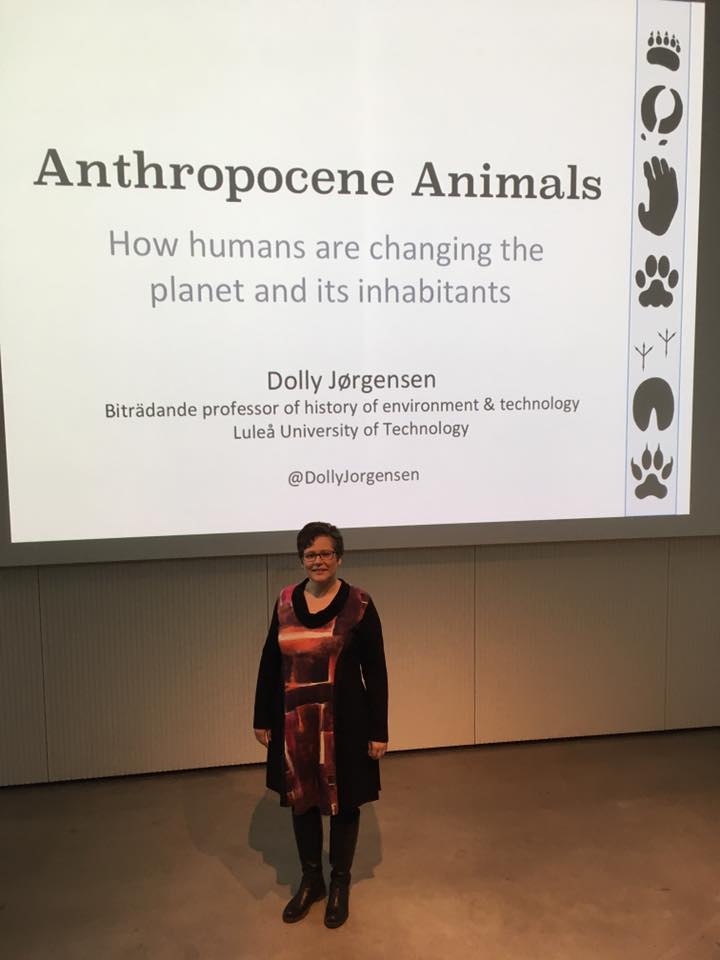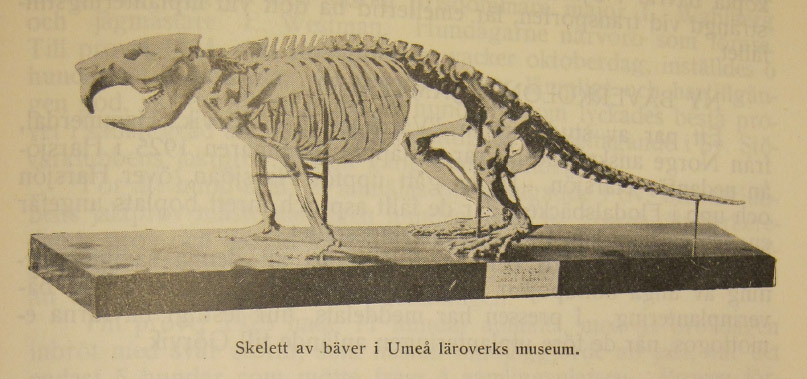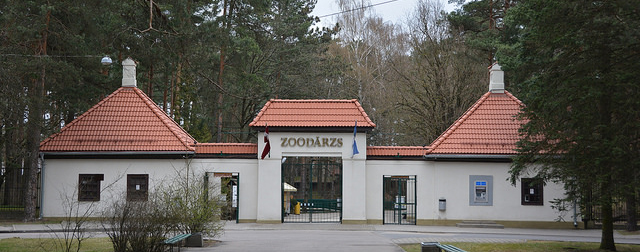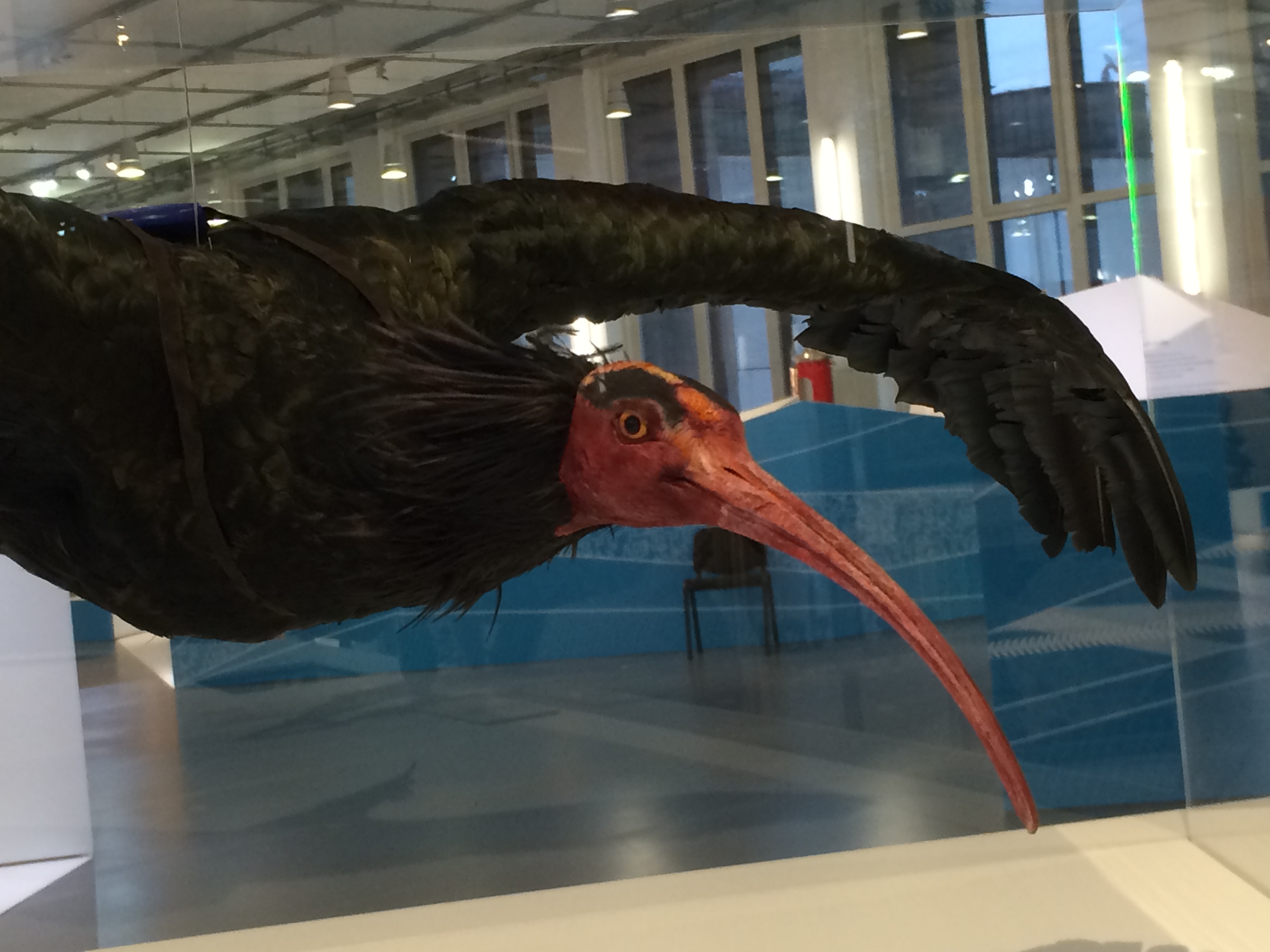
Welcome to the Anthropocene
On Wednesday, I had a tour of the new exhibit Willkommen im Anthropozän (Welcome to the Anthropocene) at the Deutsches Museum in Munich, Germany. While the validity of the Anthropocene as a geologic time frame has been been debated, few would debate that human impact on the planet is wide and deep. Humans, unlike most other animal species, have the ability to radically transform the environment through technological artefacts (a subject which you can read more about in my recent article “Not by human hands”). Acknowledging the role of technology in the reshaping of Earth, it was fitting that the first large Anthropocene exhibit be hosted in a museum of science and technology. The physical exhibit, which has a companion online exhibit in English, organises its material onto six ‘islands’: urbanization, mobility, man & machine, nature, food, and evolution. One of these–nature–contains a reintroduction story.
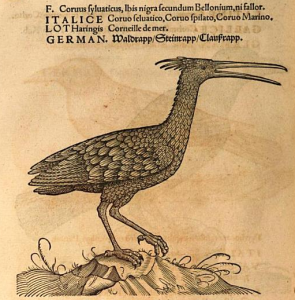
The northern bald ibis (Geronticus eremita) is critically endangered with a main wild breeding colony in Morocco of less than 500 birds. Another separate small colony of 100 semi-wild birds (they are brought indoors for the winter) lives in Turkey and a small reintroduction project has begun in Spain. It is believed that the bird was widespread in central Europe until the 17th century, having been first described and drawn by the Swiss naturalist Conrad Gessner in 1555.
A large EU-funded reintroduction project “A Reason for Hope” run by Waldrappteam is attempting to reintroduce the ibis to the Germany-Austria border region. The birds, however, are migratory, which means that the reintroduced animals need to be taught how to migrate to their wintering grounds in Tuscany. A human-led migration using a microlight craft was used in 2014 to train young birds where to fly in future years. The birds are tracked with GPS units and the movements of all of the reintroduced animals can be monitored online.
In the Welcome to the Anthropocene exhibit, the visitor encounters one of the birds who didn’t make it. The northern bald ibis is suspended within a plastic case in flight. It still has its GPS transmitter attached.
Reintroduction stories are quintessentially products of a world dominated by humans. They epitomise the Anthropocene in three ways. First, in most reintroduction projects, the reason for the species’ decline and regional demise is linked to humans, either directly through activities like hunting or indirectly with greater landscape scale change or climate change. Second, humans are the ones making the decision and taking the action to breed or capture, relocate, and monitor the animals. It is humans who decide where the animals should live or, in other words, where they belong. Thirdly, human technologies play a vital part in the relocation–whether that’s boxes which hold the animals during transport, flying contraptions that they follow to the wintering grounds, or monitoring devices to keep track of them afterward. Regardless of what is happening to the geologic strata under the ground, nature aboveground is being shaped and reshaped by humans. Welcome to the Anthropocene.


